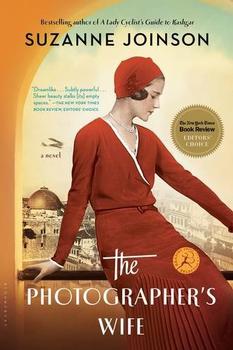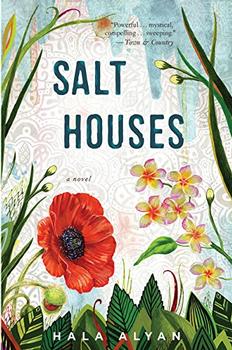Summary | Excerpt | Reading Guide | Reviews | Beyond the book | Read-Alikes | Genres & Themes | Author Bio

A powerful story of betrayal: between father and daughter, between husband and wife, and between nations and people, set in the complex period between the two world wars.
In 1920s Jerusalem, eleven-year-old Prudence watches her architect father launch an ambitious (and crazy) plan to redesign the Holy City by importing English parks to the desert. He employs a British pilot, William Harrington, to take aerial photographs of the city, and soon Prue becomes uncomfortably aware of the attraction flaring between Harrington and Eleanora, the young English wife of a famous Jerusalem photographer. Palestine has been a surprisingly harmonious mix of British colonials, exiled Armenians, and Greek, Arab, and Jewish officials rubbing elbows, but there are simmers of trouble ahead. When Harrington learns that Eleanora's husband is part of an underground group intent on removing the British, a dangerous game begins.
Years later, in 1937, Prue is an artist living a reclusive life by the sea when Harrington pays her a surprise visit. What he reveals unravels her world, and she must follow the threads that lead her back to secrets long-ago buried in Jerusalem.
The first thing you'll notice about this novel is it's absolutely stunning prose...What we end up with is a type of collage of images that dress the plot with different types of textures and fabrics; rich language puts things in light or shadow as the situations warrant them. This is the most compelling aspect of this novel, and probably the main reason I couldn't stop reading it...continued
Full Review
(756 words)
This review is available to non-members for a limited time. For full access,
become a member today.
(Reviewed by Davida Chazan).
 Most of the action of Joinson's novel, The Photographer's Wife, takes place in Jerusalem. Just the name suggests so much. Known as the seat of three major religions, it has gone by the names the City of David, the City of Peace, and even the Holy City. It is also the city that I've called my home for over 30 years. Joinson's book notes how just the mention of the city evokes immediate reactions in people who have never been here. I can certainly attest to that, since I cannot recall the number of times people have asked me "What is it like to live there?" People never think that living here is essentially the same as living in any other famous city. We have a home, jobs and things to do, just like if we lived anywhere else. Many people ...
Most of the action of Joinson's novel, The Photographer's Wife, takes place in Jerusalem. Just the name suggests so much. Known as the seat of three major religions, it has gone by the names the City of David, the City of Peace, and even the Holy City. It is also the city that I've called my home for over 30 years. Joinson's book notes how just the mention of the city evokes immediate reactions in people who have never been here. I can certainly attest to that, since I cannot recall the number of times people have asked me "What is it like to live there?" People never think that living here is essentially the same as living in any other famous city. We have a home, jobs and things to do, just like if we lived anywhere else. Many people ...
This "beyond the book" feature is available to non-members for a limited time. Join today for full access.

If you liked The Photographer's Wife, try these:

by Hala Alyan
Published 2018
From a dazzling new literary voice, a debut novel about a Palestinian family caught between present and past, between displacement and home.

by Aline Ohanesian
Published 2016
Moving between the last years of the Ottoman Empire and the 1990s, a story of passionate love, unspeakable horrors, incredible resilience, and the hidden stories that haunt a family.
Finishing second in the Olympics gets you silver. Finishing second in politics gets you oblivion.
Click Here to find out who said this, as well as discovering other famous literary quotes!